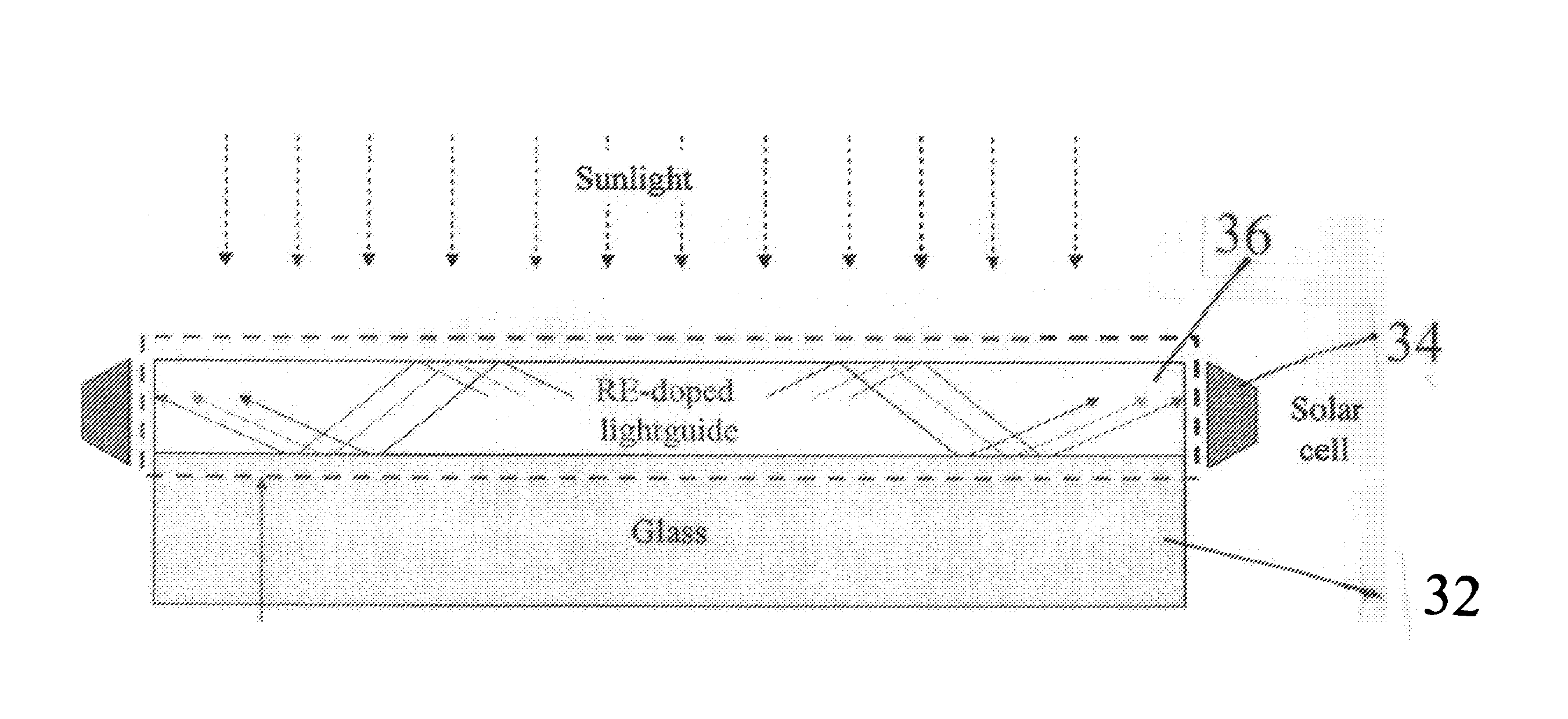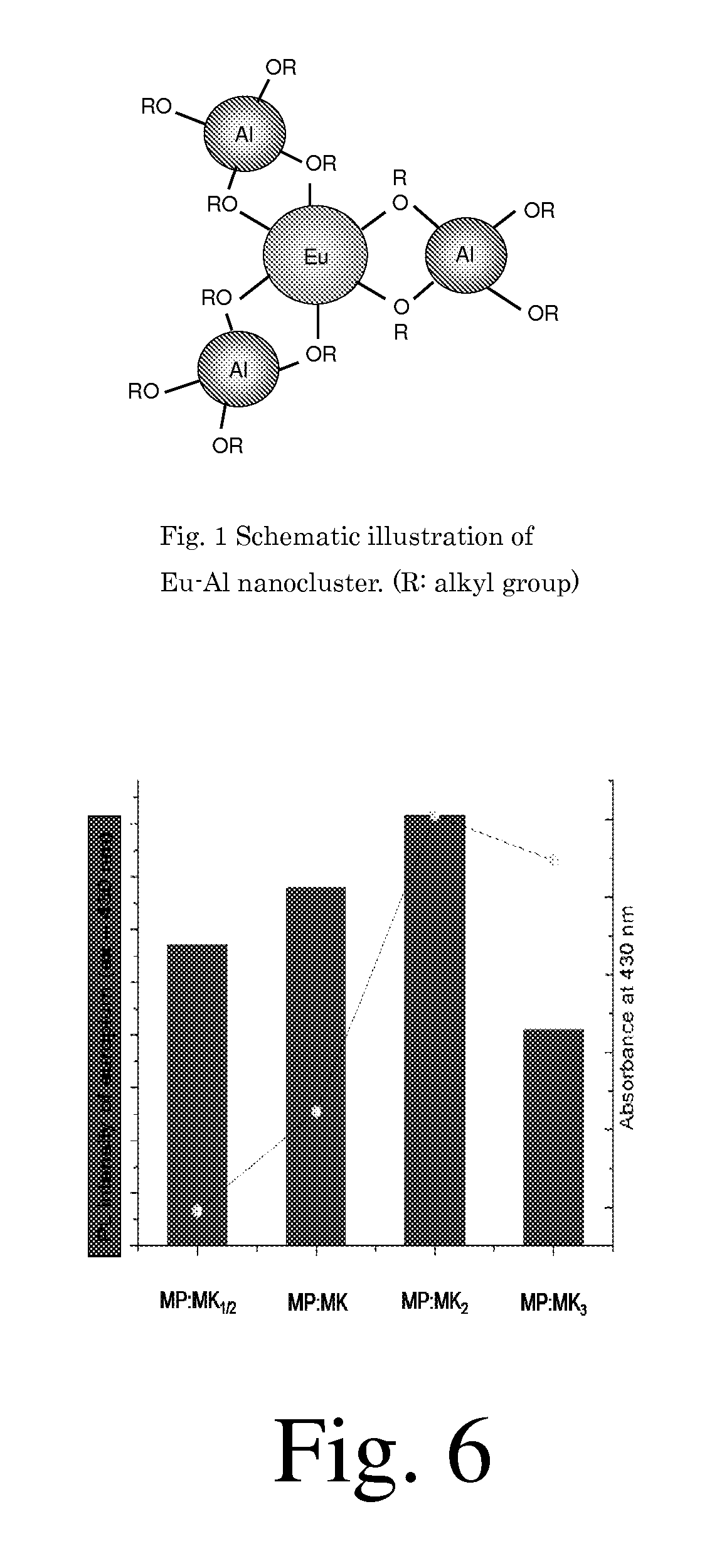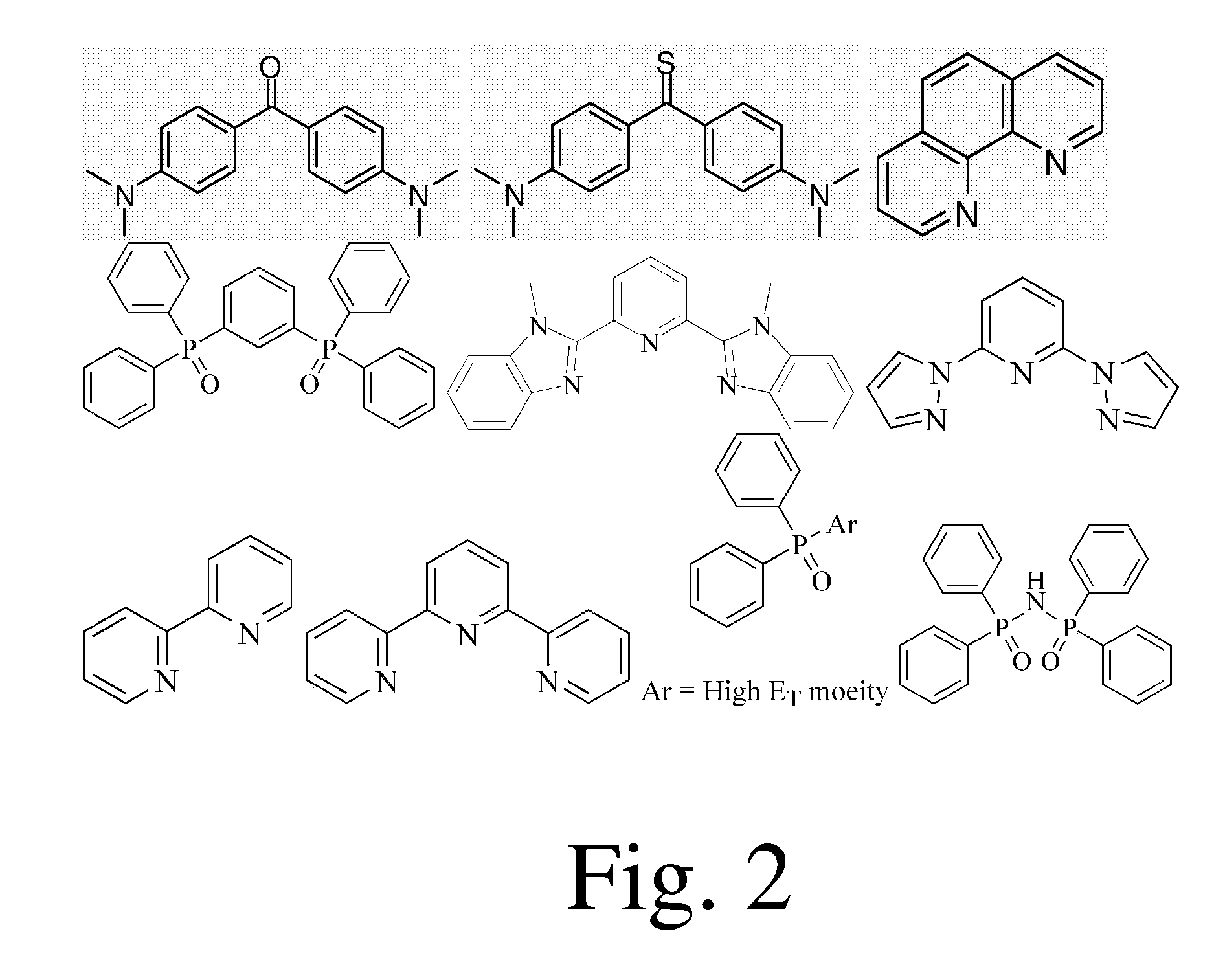Organic-Inorganic Complexes Containing a Luminescent Rare earth-Metal Nanocluster and an Antenna Ligand, Luminescent Articles, and Methods of Making Luminescent Compositions
a rare earth-metal nanocluster and organic-inorganic complex technology, applied in the field of organic-inorganic complexes, can solve the problems of res not being used successfully, used in the practical field, and reabsorption of luminescence, and achieve the effect of increasing the luminescence of nps
- Summary
- Abstract
- Description
- Claims
- Application Information
AI Technical Summary
Benefits of technology
Problems solved by technology
Method used
Image
Examples
examples
Dependence of Michler's Ketone (MK) / RE-M Nanocluster Ratio on the Sensitization
[0090]The molar ratio of MK / Eu—Al nanocluster was varied; 0.5, 1, 2, and 3. Methylmethacrylate (MMA) doped with MK / Eu—Al was coated onto a silica (SiO2) substrate. The film thickness was about 400 Å. The photoluminescence spectra were obtained by exciting the film with monochromatic light at a wavelength of 430 nm. The result (see FIG. 6) revealed that the photoluminescent intensity is maximized when the MK / Eu—Al nanocluster ratio is about 2; with intensity increasing in the order 3<0.5<1<2. At the ratio of 3, the photoluminescent intensity drops significantly. It is therefore favorable to control the MK / Eu—Al nanocluster within ratios of 0.5 to less than 3 and, more preferably in the range of 1.0 to 2.5. This result is generalized to desirable ratio of antenna ligand to RE atom in a nanocluster.
Solar Cell Efficiency Measurement
embodiment 1
[0093]A mixture of MMA, Eu—Al nanocluster (5% by weight) and DEAP (0.5% by weight) (Eu—Al / MMA) was coated onto single-crystalline Si (c-Si) solar cells by spin-coating at a rotation speed of 1000 rpm and polymerized as above. As a result, the change rates of the solar cell efficiency after coating compared with before coating ranges from 0% to +14%. When comparing with the control, this indicates that the solar cell efficiency of c-Si solar cell was enhanced.
Solar Cell Efficiency Measurement
embodiment 2
[0094]A mixture of MMA, Eu—Al nanoclusters (5% by weight), MK (molar equivalent to Eu—Al nanocluster) and DEAP (0.5% by weight) was coated onto single-crystalline Si (c-Si) solar cells by spin-coating at a rotation speed of 1000 rpm and polymerized. As a result, the change rates of the solar cell efficiency after coating compared with before coating ranges from 0% to +19%. When comparing with the previous examples, it is clear that the solar cell efficiency of c-Si solar cell was enhanced and that the enhancement rate was significantly larger than Eu—Al nanocluster alone.
[0095]We used the Eu—Al nanocluster [Eu—Al3](OAc)3(O-isoBu)9 as an example of the RE-M nanocluster and this nanocluster was dispersed at 5% by weight in a methyl methacrylate (MMA) solution. The procedures for the synthesis of Eu—Al nanocluster and its doping into MMA (Eu—Al / MMA) are described elsewhere. See for example H. Mataki and T. Fukui, Proc. of 2005 5th IEEE Conference on Nanotechnology (N...
PUM
| Property | Measurement | Unit |
|---|---|---|
| Size | aaaaa | aaaaa |
| Size | aaaaa | aaaaa |
| Size | aaaaa | aaaaa |
Abstract
Description
Claims
Application Information
 Login to View More
Login to View More - R&D
- Intellectual Property
- Life Sciences
- Materials
- Tech Scout
- Unparalleled Data Quality
- Higher Quality Content
- 60% Fewer Hallucinations
Browse by: Latest US Patents, China's latest patents, Technical Efficacy Thesaurus, Application Domain, Technology Topic, Popular Technical Reports.
© 2025 PatSnap. All rights reserved.Legal|Privacy policy|Modern Slavery Act Transparency Statement|Sitemap|About US| Contact US: help@patsnap.com



